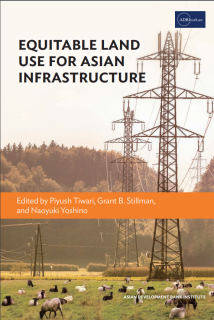
The aim of this book is to set forth debate on alternative practices for land use management in urban development and public infrastructure projects in Asia. The objective is to streamline the discussion that follows on land management strategies based on core objectives and principles on which models and tools work rather than their nomenclature. This book is organized in four parts to present a comprehensive treatise on the subject.
- Part 1: Bases of Land Ownership and Land Use Rights and Management
- Part 2: Current Challenges for Land Use Management
- Part 3: Innovations in Planning and Land Use Management Strategies
- Part 4: Toward Equitable Land Use for Infrastructure
Obtaining rights over land can be complicated by hurdles imposed by geography, settlement patterns, conflicting cultures, sociopolitical factors, and land use problems unique to each country. Equitable Land Use for Asian Infrastructure identifies policies that can balance the rights and interests of first peoples, informal settlers, and rural landowners against the development imperatives of land procurement for the greater public good. The collected chapters propose and assess promising models that might be customized to local conditions, such as long-term land leasing with options to buy. This timely volume will be insightful for policy makers, practitioners, academics, and students interested in instructive case studies of the state of Asian land registration, eminent domain, and redevelopment in situations of vulnerable communities.
